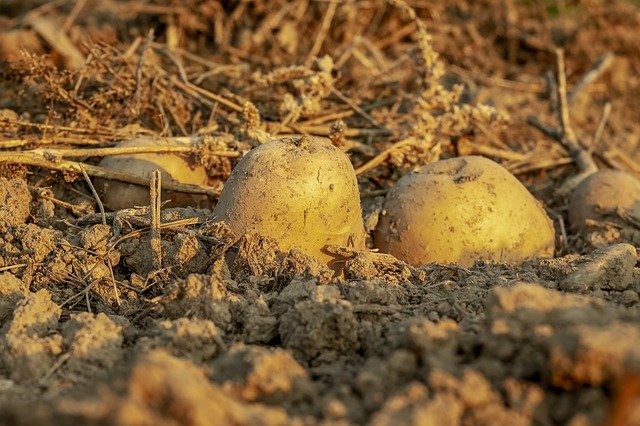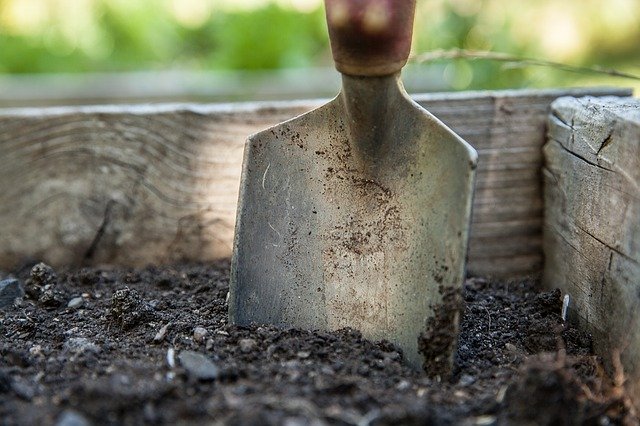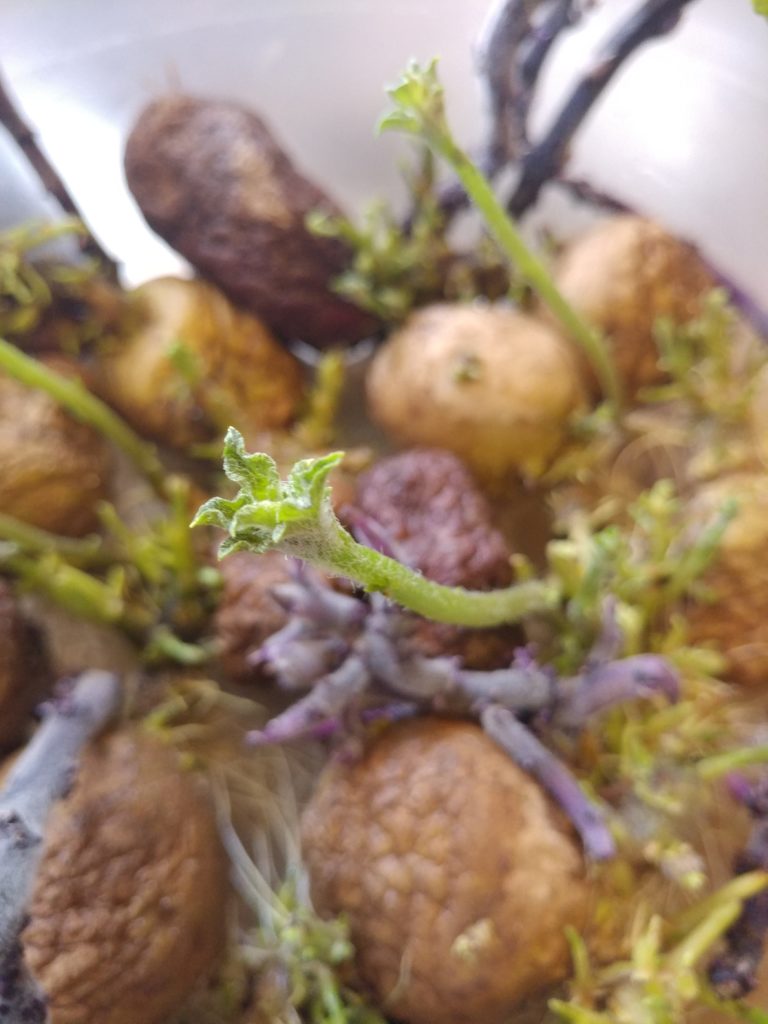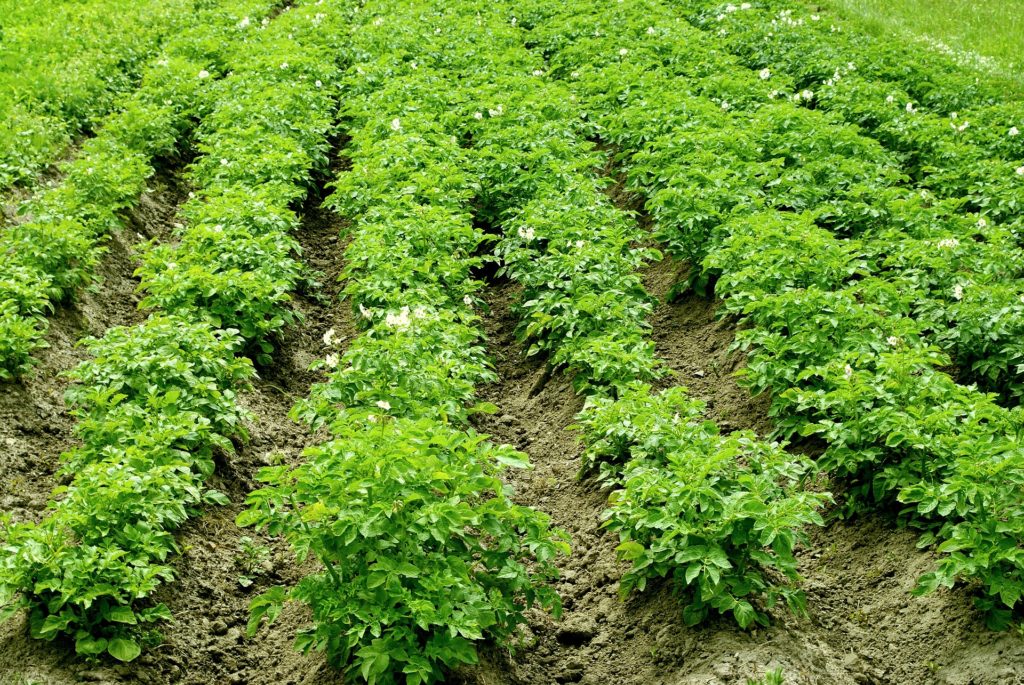Sure, potatoes can be incredibly easy plants to grow.
However, you may not get the best yield in sub-par growing or care conditions.
Every successful potato grower has her or his own ritual when it comes to caring for their plants, and perhaps, even their own well-guarded secrets.
If your potato plants have looked like they lived the struggle, or if your potato harvest was more on the miniature side of things, it probably left you feeling cheating and upset, especially with the incredibly low cost of potatoes at the supermarket.
To start turning things around, give the tips in this post a go; while you’re at it, be sure that you read up on:
- Watering Potato Plants
- Causes of Small Tubers
- The Problems with Potato Towers
- What Not to Plant Near Potatoes

Watch the Weather Forecast
The weather is a critical part of growing potatoes.
If it gets too hot, potatoes will not want to flower or grow tubers.
If it gets too cold, a frost or freeze may occur, damaging foliage and killing plants back to the ground (they won’t be dead, they’ll grow back, but the harvest will suffer.)
If it gets too dry, potatoes won’t form well, and powdery mildew may take hold (along with spider mites.)
If it’s too wet, there will be fungal issues and rot galore if plants don’t have proper spacing, allowing air to pass through.
It’s a lot to keep track of; just make sure that you:
- Cover plants for an impending frost or freeze
- Water plants during drought
- Watch for disease during wet weather
- Mulch to keep the root zone cool during heat waves

Touch the Soil
Every few days, a potato gardener (especially breeders or those growing potatoes for competitions) will touch the soil to evaluate moisture levels.
To try this, stick your finger 1″ into the soil. If the soil is bone dry, you need to water the plants more often. Avoid allowing the soil to dry out like this; a good soaking could cause cracking if the tubers and plants are on the verge of wilting.
If the soil is hardly damp, give it a good soaking. It’s time to water them.
If the soil is damp/slightly wet, the potato plants are right where they’d like to be!
If the soil is wet/saturated, don’t water the plants. They need to dry out some, and likely won’t need water for 3 to 7 days, depending on your soil type.

Inspecting the Hills
You should inspect your hills quite often!
First, you want to top up the hills two to four times per month, by raking the soil from the trenches back over the hills.
Before doing so, look for exposed tubers. If tubers are exposed to sunlight, they will turn green and will be rendered inedible. These tubers will also likely begin growing a new plant.
You also want to watch for signs of pests, including exposed tubers (or leftovers) that have been chewed on, small holes in the sides of your hills (about the size of a half-dollar or so would point towards voles), or signs of digging. Voles are a major problem for gardeners, as a colony of voles can decimate your crops- trust me here! I’ve had it happen!

Watching for Holes in Plants
Speaking of holes, there are pests that will eat your potato plant down to its skeleton (AKA, vascular system.)
If your potato plants look as if they’ve become some sort of a lace project, with thousands of little holes the size of a ballpoint pen tip or larger, you’ve got a case of the infamous flea beetles to deal with. My two favorite ways to deal with these impossible little creatures are to:
- Dust the top of plants with diatomaceous earth and…
- Plant a sacrificial trap crop (like radishes) nearby, which the flea beetles will enjoy much, much more.

Nursing the Plants
Every single day, take a moment to truly look at your plants. Notice and take note of anything that might seem off or unusual, as you’ll catch many issues very early in this way.
- Notice sudden browning or wilting leaves? Take note, and flag the area. Check for spreading daily; if wilt is identified, pull and burn affected plants. Pull any other plants that display signs of wilt at the moment that you spot it.
- Notice that one plant is somewhat stunted? Check to see if access to sunlight is restricted, limiting growth. If not, the plant may be competing heavily for nutrients, or simply might be growing from a smaller seed potato piece. Weed, and fertilize if necessary.
- Are newer leaves looking a little pale, streaked, or poorly formed? Check your fertilizing schedule and apply if necessary. If you’re unsure of the cause of abnormal leaf shape or coloring, have a soil test done. There are many deficiencies that can cause altered color or leaf shape, including magnesium and nitrogen.